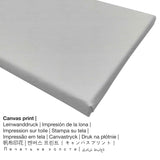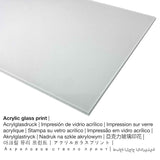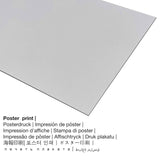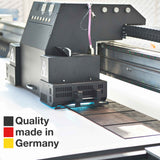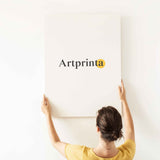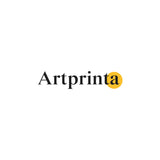Giovanni Domenico Tiepolo, 1754 - Mmeri nke Pulcinella - ọmarịcha nka.
Ụtụ gụnyere. Mbupu gbakọrọ na ndenye ọpụpụ.
Eziokwu na-akpali mmasị gbasara mbipụta nka akpọrọ "The Triumph of Pulcinella"
na 1754 Giovanni Domenico Tiepolo mere ihe osise a aha The Triumph of Pulcinella. Nowadays, the artwork is part of the art collection of Statens Museum for Kunst (National Gallery of Denmark) located in Copenhagen, Denmark. With courtesy of National Gallery of Denmark (license: public domain).The creditline of the artpiece is the following: . The alignment of the digital reproduction is in odida obodo format ya na oke onyonyo nke 16: 9, nke pụtara na ogologo bụ 78% ogologo karịa obosara. Giovanni Domenico Tiepolo was a male painter, printmaker, whose style was mainly Rococo. The Italian artist lived for a total of 77 years - born in 1727 na Venice, mpaghara Venezia, Veneto, Italy ma nwụọ n'afọ 1804 na Venice, Venezia Province, Veneto, Italy.
Original artwork information by Statens Museum for Kunst (National Gallery of Denmark) (© Copyright - Statens Museum for Kunst (National Gallery of Denmark) - Statens Museum maka Kunst (National Gallery nke Denmark))
The art of 18th-century Venice was created in a city that had lost its international political significance, but which still continued its traditions for splendid ceremonies and parties from its past days of glory.
The parties included the annual carnival with its costumed crowds and unrestrained behaviour.
The theater character Pulcinella The Triumph of Pulcinella is a series of paintings originally consisting of four paintings that deal with the carnival and its gallery of musicians, street performers, and quacks. Pulcinella, the original Mr. Punch, is a character from the Italian commedia dell’arte and is easily recognised by his fat, hunchbacked physique, large nose, and conical hat. In Tiepolo’s works he appears in several “cloned” versions that take part in mirth-provoking or slapstick scenes. The artist’s fascination with the figure is borne out by the 104 drawings of scenes from the life of Pulcinella that he did under the heading Entertainment for Children.
Poking fun at the triumphal entries The Triumph of Pulcinella pokes fun at triumphal entries familiar from traditional ceremonies where the triumphator is the centre of attention. This ceremony is also familiar from traditional historical painting, but here it has been caricatured with the ample figure of Pulcinella carried by his brother while other characters from commedia dell’arte look on.
Ozi ndabere gbasara akụkụ nka pụrụ iche
| Aha nke eserese ahụ: | "The Triumph of Pulcinella" |
| Nhazi: | sere |
| Nhazi nka: | nka ochie |
| Nhazi oge: | 18th narị afọ |
| Afọ okike: | 1754 |
| Afọ nka: | gbara afọ 260 |
| Egosiputara na: | Statens Museum maka Kunst (National Gallery nke Denmark) |
| Ebe ngosi nka: | Copenhagen, Denmark |
| Ibe weebụ: | www.smk.dk |
| Ụdị nka nka: | ngalaba ọha |
| Site n'aka: | National Gallery nke Denmark |
Data omenka ahaziri ahazi
| Aha onye nka: | Giovanni Domenico Tiepolo |
| Aha utu aha: | D. Tiepolo, Dominique Tiepolo, tiepolo giovanni dominico venedig, Giovanni Dom. Tiepolo, Tiepolo C. D., Tiepoletto, Tiepolo Giovanni Domenico, Gian Domenico Tiepolo, g. dom. tiepolo, Tiepolo Giandomenico, G.D. Tiepolo, Tieplo. Juni, giardominico tiepolo, Tiepolo Gian Domenico, Domenico Tiepolo, G. D. Tiepolo, Giovanni Domenico Tiepolo, dom. tiepolo, Tiepolo Domenico, Tiepolo G. D., gio. domenico tiepolo, giov. domenico tiepolo, Giandomenico Tiepolo, Tiepolo, Donimique Tiépolo, tiepolo giov. domenico |
| okike nke onye nka: | nwoke |
| Obodo onye nka: | Italian |
| Ọrụ: | onye na-ese ihe, onye na-ebi akwụkwọ |
| Country: | Italy |
| Nhazi nke onye nka: | nna ukwu ochie |
| Ụdị nka: | Rococo |
| Nwụrụ anwụ: | 77 afọ |
| Afọ ọmụmụ: | 1727 |
| Obodo: | Venice, mpaghara Venezia, Veneto, Italy |
| Nwụrụ n'afọ: | 1804 |
| Nwuru na (ebe): | Venice, mpaghara Venezia, Veneto, Italy |
Họrọ ihe kacha amasị gị
In the dropdown lists right next to the product you can select your prefered material and size. Pick your favorite size and material among the following options:
- Kwaaji: A canvas print is a printed canvas mounted on a wooden frame. Besides, printed canvas makes a nice, enjoyable appearance. A canvas print of your favorite artpiece will let you turn your into a large work of art like you know from galleries. Canvas Prints have the advantage of being low in weight, which means that it is easy to hang up your Canvas print without the use of additional wall-mounts. That is why, a canvas print is suited for all types of walls.
- Mbipụta akwụkwọ mmado (ihe kwaaji): The poster print is a UV printed flat canvas with a fine surface finish. A poster print is optimally qualified for placing your fine art print with a personal frame. Please bear in mind, that depending on the size of the canvas poster print we add a white margin of something between 2-6 cm around the painting in order to facilitate the framing with your custom frame.
- Mbipụta iko acrylic (nke nwere ezigbo mkpuchi iko): An print on acrylic glass, often described as a UV print on plexiglass, changes the original artwork into brilliant home décor. Additionally, the acrylic print offers a great alternative option to canvas and aluminidum dibond art prints. Your favorite work of art is being custom-made with the help of state-of-the-art UV direct print machines. This has the image effect of vivid, stunning color tones. The real glass coating protects your custom art replica against light and external influences for decades.
- Mbipụta nke aluminom: This is a metal print made on aluminium dibond material with a true depth effect. The non-reflective surface make a modern impression. The bright components of the original artwork shimmer with a silk gloss, however without glare. The print on Aluminum Dibond is the most popular entry-level product and is a truly sophisticated way to display art reproductions, as it puts 100% of the viewer’s focus on the whole artwork.
Banyere ihe
| Nkewa edemede: | ọrụ mgbidi |
| Mmeputakwa: | mmeputakwa n'ụdị dijitalụ |
| Usoro mmepụta: | Mbipụta UV ozugbo (mbipụta dijitalụ) |
| Mmalite nke ngwaahịa a: | emere na Germany |
| Stockdị ngwaahịa: | mmepụta ihe na-achọ |
| A na-atụ aro iji ngwaahịa eme ihe: | Ụlọ ihe ngosi nka, ụlọ mmepụta ihe nka |
| Nhazi nka nka: | usoro odida obodo |
| Ụdị anya: | 16:9- ogologo: obosara |
| Oke akụkụ pụtara: | ogologo bụ 78% ogologo karịa obosara |
| Ihe mmeputakwa dị: | ígwè obibi akwụkwọ (aluminium dibond), akwụkwọ mmado (akwụkwọ kwaaji), mbipụta enyo acrylic (nke nwere ezigbo mkpuchi iko), mbipụta akwụkwọ. |
| Mbipụta kanvas (akwa akwa na etiti ihe ndọtị): | 90x50cm - 35x20", 180x100cm - 71x39" |
| Mbipụta iko acrylic (nwere ezigbo mkpuchi iko) dị iche iche: | 90x50cm - 35x20", 180x100cm - 71x39" |
| Nhọrọ nha nke akwụkwọ mmado (akwụkwọ kwaaji): | 90x50cm - 35x20" |
| Mpempe akwụkwọ Dibony (ihe alumnium) nha: | 90x50cm - 35x20" |
| Nhazi mbipụta nka: | adịghị |
Ihe dị mkpa: We try in order to describe our products as clearly as possible and to illustrate them visually on the different product detail pages. Please bear in mind that the tone of the printing material, as well as the printing may diverge to a certain extent from the representation on your monitor. Depending on the settings of your screen and the nature of the surface, color pigments might not be printed as realisitcally as the digital version on this website. Because all are processed and printed manually, there may also be slight deviations in the motif's exact position and the size.
Edobere ederede a site na nwebisiinka © - Artprinta (www.artprinta.com)


